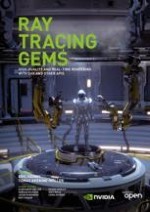Open Access 2019 | Open Access | Buch

Ray Tracing Gems
High-Quality and Real-Time Rendering with DXR and Other APIs
herausgegeben von: Eric Haines, Tomas Akenine-Möller
Verlag: Apress
Open Access 2019 | Open Access | Buch

herausgegeben von: Eric Haines, Tomas Akenine-Möller
Verlag: Apress
This book is a must-have for anyone serious about rendering in real time. With the announcement of new ray tracing APIs and hardware to support them, developers can easily create real-time applications with ray tracing as a core component. As ray tracing on the GPU becomes faster, it will play a more central role in real-time rendering. Ray Tracing Gems provides key building blocks for developers of games, architectural applications, visualizations, and more. Experts in rendering share their knowledge by explaining everything from nitty-gritty techniques that will improve any ray tracer to mastery of the new capabilities of current and future hardware.
What you'll learn: The latest ray tracing techniques for developing real-time applications in multiple domains
Guidance, advice, and best practices for rendering applications with Microsoft DirectX Raytracing (DXR)
How to implement high-performance graphics for interactive visualizations, games, simulations, and more
Who this book is for:Developers who are looking to leverage the latest APIs and GPU technology for real-time rendering and ray tracing
Students looking to learn about best practices in these areas
Enthusiasts who want to understand and experiment with their new GPUs